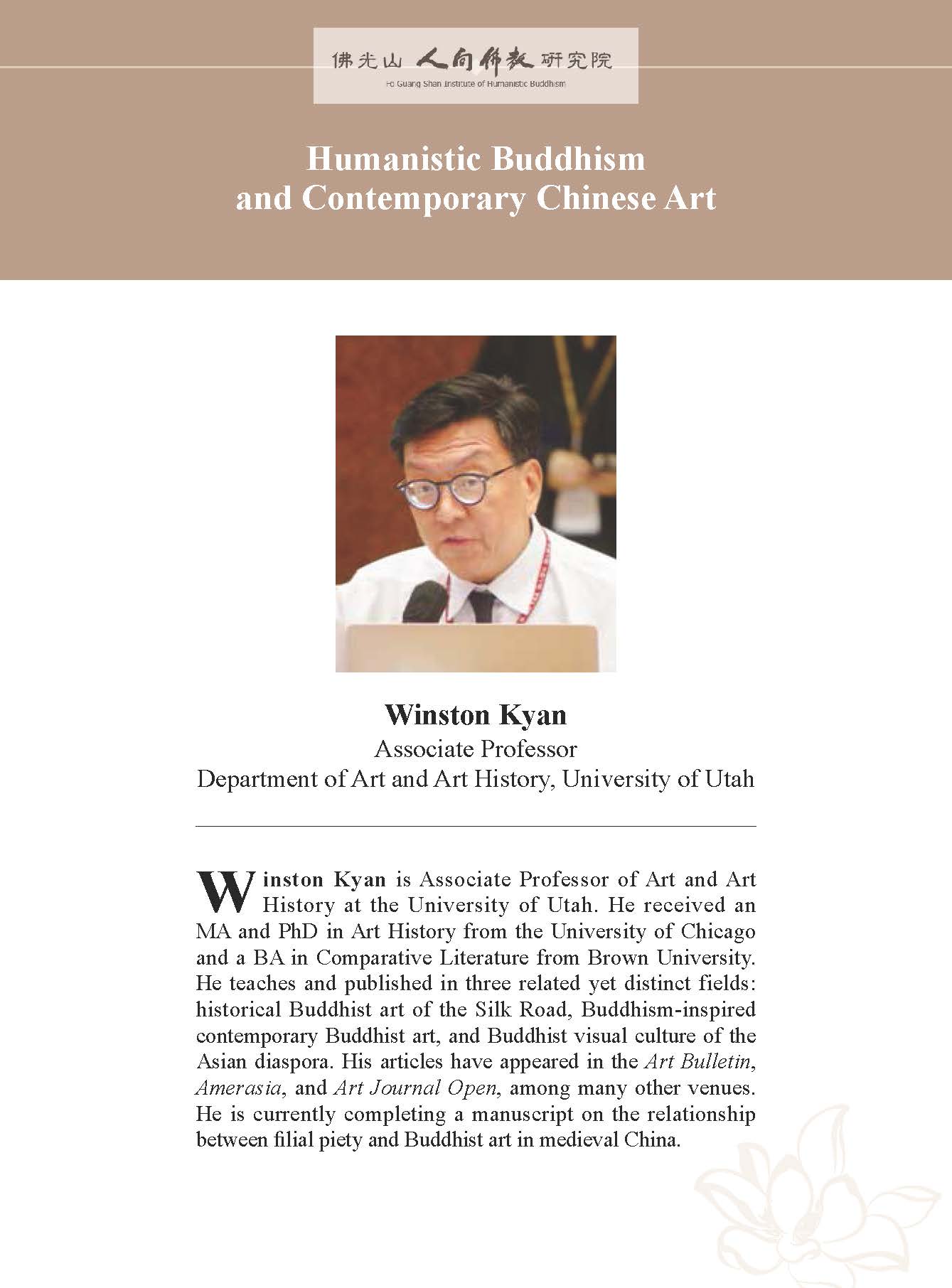
|
Humanistic Buddhism and Contemporary Chinese Art
作者
Winston Kyan
單位職稱
Associate Professor, Department of Art and Art History, University of Utah
編者
妙凡、程恭讓總編輯
摘要
As we enter into the third decade of the twenty-first century, at least two observations can be made. On the one hand, the human condition faces its own extinction as artificial intelligence and climate change substitute basic human habits and habitats. These substitutions simulate—but can arguably never replace—natural human ones. It is not surprising, then, that fundamental aspects of the human world buried by progress into the ashcan of history have risen from the dead. The current renewal of human tribalism and authoritarian systems challenge assumptions of what “progress” and “modernity” as defined by Western Enlightenment is and can be. Indeed, cultural critics have discussed the phenomenon of postmodernity as characterizing the late twentieth century. Can we speak of neo-tradition and post-progress as veins running through the early twenty-first century? We clearly feel the pulse of these veins, but remain unsure of their paths or purpose.
引文
Winston Kyan, " Humanistic Buddhism and Contemporary Chinese Art, " 2019人間佛教高峰論壇──人間佛教與未來學 (2020): 298-310
全文下載











